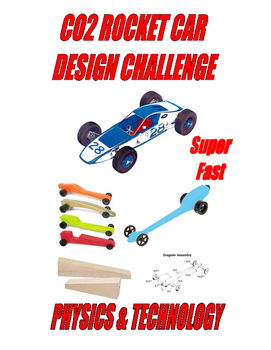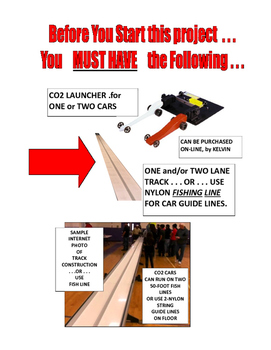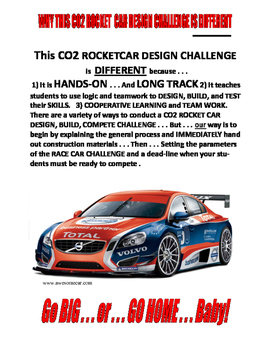CO2 ROCKET CAR DESIGN CHALLENGE . . . S.T.E.M. . . 29-pages ***** 5-STAR
- PDF
Description
*****5-STAR Premium Lesson SALE $19.99 Limited Time Offer . . . This CO2 ROCKET CAR S.T.E.M. DESIGN CHALLENGE (29-PAGES includes student report) is DIFFERENT because . . . 1) It is HANDS-ON . . . And includes a 50-foot LONG TRACK track design 2) It teaches students to use logic and teamwork to DESIGN, BUILD, and TEST their SKILLS. 3) COOPERATIVE LEARNING and TEAM WORK. There are a variety of ways to conduct a CO2 ROCKET CAR DESIGN, BUILD, COMPETE CHALLENGE . . . But . . . our way is to begin by explaining the general process and IMMEDIATELY hand out construction materials . . . Then . . . Setting the parameters of the RACE CAR CHALLENGE and a dead-line when your students must be ready to compete . HURRY . . .One BLINK of the eye . . . and they're GONE!!! fun fun fun! *****5-STAR Premium Lesson SALE $19.99 Limited Time Offer.





